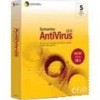Symantec 10551441 Installation Guide - Page 76
Steps to migrating your network to the current version of Symantec AntiVirus - removal tool
 |
UPC - 037648270472
View all Symantec 10551441 manuals
Add to My Manuals
Save this manual to your list of manuals |
Page 76 highlights
76 Migrating to the current version of Symantec AntiVirus Migration overview Steps to migrating your network to the current version of Symantec AntiVirus Upgrading to the current version of Symantec AntiVirus is a multi-step process. The steps should include the following: ■ Create a migration plan. Before you begin rolling out the Symantec AntiVirus client, server, and administration upgrades, you should have a solid understanding of your network topology and a streamlined plan to maximize the protection of the resources on your network during the upgrade. Migrating your entire network to the current version (as opposed to managing multiple versions of Symantec AntiVirus) is strongly recommended. See "Creating migration plans" on page 78. ■ Upgrade the Symantec System Center. Before you roll out new Symantec AntiVirus client or server installations, you should upgrade the Symantec System Center management snap-in. The Symantec System Center provides the rollout and management tools necessary to deploy the installation files, monitor installation status, and immediately manage the supported clients and servers that you are upgrading. ■ Migrate the antivirus servers. ■ Deploy Symantec AntiVirus to clients. Supported and unsupported server and client migration paths The following section lists the platforms that are supported and unsupported when migrating to the current version of Symantec AntiVirus. If the migration of a program is supported, the Symantec AntiVirus setup program automatically detects the software, removes the legacy components and registry entries, and installs the new version. If the migration from a previous product is not supported, you must uninstall the program before you run the Symantec AntiVirus installation program. In most cases, if you are migrating from a legacy antivirus program that is not included in the list of supported migration paths, the installation program will fail during the installation, the user is notified that the installation was unsuccessful, and the Windows Installer log is updated. However, in some cases, if you do not uninstall the unsupported product before you run the installation, the installation may appear to succeed, but the product may not function properly. You should always uninstall any antivirusprogram that is not included in the list of supported migration paths before attempting to install the current version.















